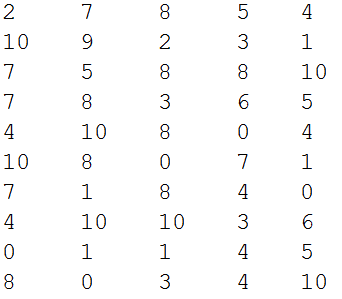refcol = 3; dt = RandomInteger[10, {10, 5}]; dt//TableForm

Select[dt, Max[# - #[[refcol]]] <= 0 &] (* {{2, 7, 8, 5, 4}, {7, 1, 8, 4, 0}, {4, 10, 10, 3, 6}} *)
Alternatively,
DeleteCases[dt, _?(Max[# - #[[refcol]]] > 0 &)] Cases[dt, _?(Max[# - #[[refcol]]] <= 0 &)] Pick[dt, (Max[# - #[[refcol]]] <= 0) & /@ dt]
all give the same output.
Showing the deleted rows in red:
If[Max[# - #[[refcol]]] > 0, Style[#, Bold, Red, 20] & /@ #, Style[#, Directive[Bold, 20]] & /@ #] & /@ dt // TableForm

Update: The four functions above work for the case of a single reference column.For the case where a row is deleted if any entry exceeds any of the multiple reference column entries, one needs the following straightforward modifications:
f1 = Function[{dt, cols}, With[{rest = Complement[Range@Length@dt[[1]], cols]}, Pick[dt, (Max[#[[rest]] - Min[#[[cols]]]] <= 0) & /@ dt]]]; f2 = Function[{dt, cols}, With[{rest = Complement[Range@Length@dt[[1]], cols]}, Select[dt, Max[#[[rest]] - Min[#[[cols]]]] <= 0 &]]]; f3 = Function[{dt, cols}, With[{rest = Complement[Range@Length@dt[[1]], cols]}, Cases[dt, _?(Max[#[[rest]] - Min[#[[cols]]]] <= 0 &)]]]; f4 = Function[{dt, cols}, With[{rest = Complement[Range@Length@dt[[1]], cols]}, DeleteCases[dt, _?(Max[#[[rest]] - Min[#[[cols]]]] > 0 &)]]]; f1[dt, {2, 3}] == f2[dt, {2, 3}] == f3[dt, {2, 3}] == f4[dt, {2, 3}] (* True *) f1[dt, {2, 3}] (* {{2, 7, 8, 5, 4}, {4, 10, 8, 0, 4}, {4, 10, 10, 3, 6}} *)


